|
Cantata BWV 176
Er ist ein trotzig und verzagt Ding
Examples from the Score & Commentary |
|
Mvt. 1 Chorus | Mvt. 2 Recitative [Alto] | Mvt. 3 Aria [Soprano] | Mvt. 4 Recitaive [Bass] | Mvt. 5 Aria [Alto] | Mvt. 6 Chorale |
| |
|
Mvt. 1 Chorus |
|
The first few measures of the cantata contain in nuce the antithetical concept which is germinal for that which follows, not only in the same mvt., but throughout the cantata. This idea becomes the unifying, controlling element that guides Bach as he composes the music for the text that follows. He clearly delineates the ascent from the descent, not only by upward and downward movement, but also with dynamics, forte vs. piano, with concitato instrumental accompaniment vs. larger note values in a lower range, with a punctuating motif of defiance followed by a crying sigh-motif in the voices. The remainder of this movement, as well as the rest of the cantata, unfolds utilizing the elements that are presented here. Notice that the sigh motif is not marked as such in the voice part, but only in the basso continuo. |
|
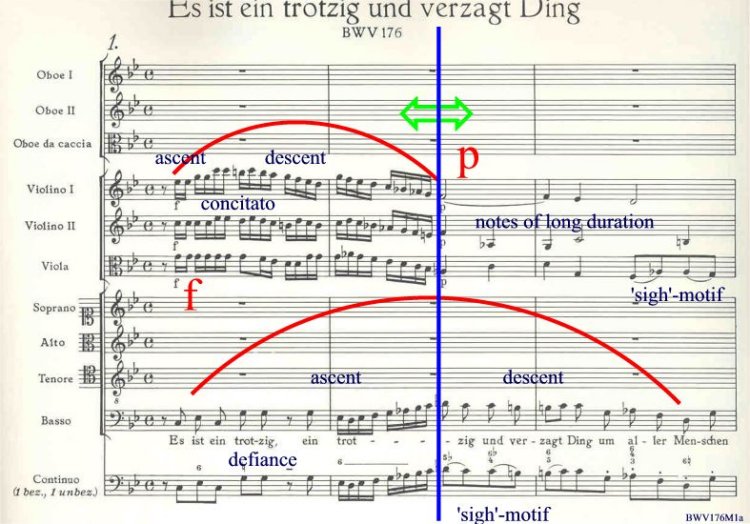
|
|
The second example simply continues from the first, allowing you to see the end of the fugal theme in the bass voice. Notice the stalking effect in the bass just before the tenor voice enters. Again the sigh-motif is marked in the instrumental parts, but not in the voice part. Was this intentional, or does this simply mean that an assumption can be made that the voice parts would do likewise? |
|
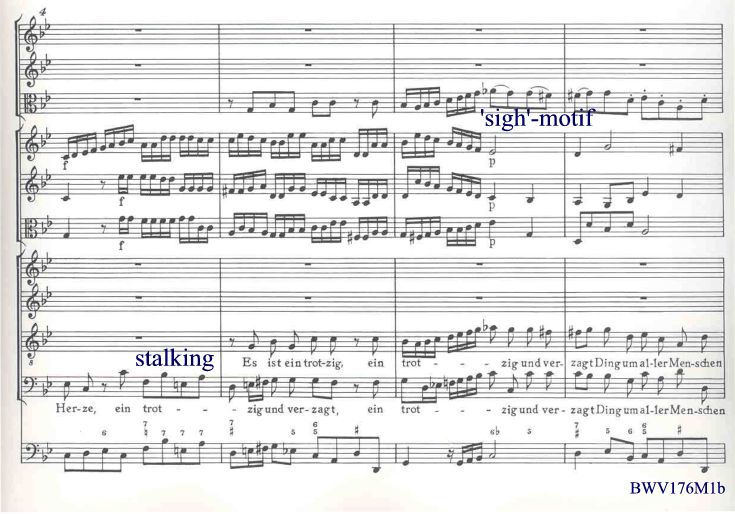
|
| |
|
Mvt. 2 Recitative [Alto] |
|
Note the position (high, low) of the notes that Bach uses to underscore the meaning of 'day' and 'night.' |
|
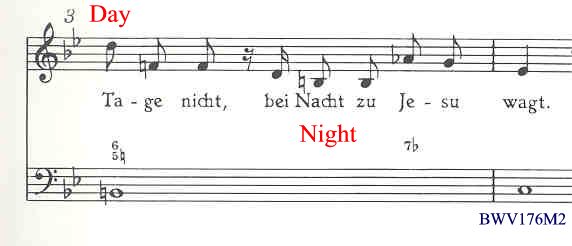
|
| |
|
Mvt. 3 Aria [Soprano] |
|
Chafe points out the numerous short ascent/descent figures that echo the monumental fugal theme of the 1st mvt. |
|
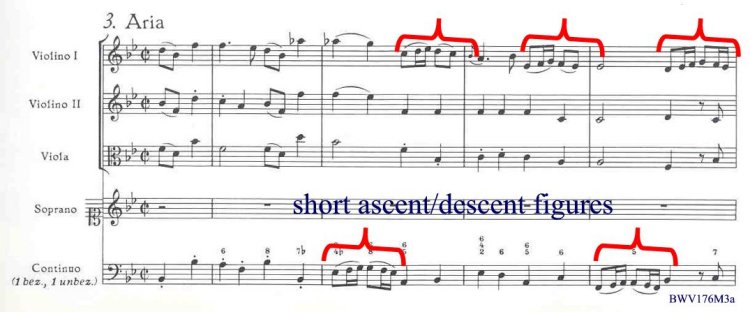
|
|
There is a marvelous combination of musical figures to illustrate the text that refers to the "shining" of Jesus while at the same time the instrumental accompaniment creates the shape of a 'rainbow' with the short ascent/descent motif. How do we know that Bach has this in mind? Chafe compares this motif with the same motif in the "Erwäge" aria of the SJP, where it accompanies the voice as it sings, "Regenbogen" ("rainbow"). |
|
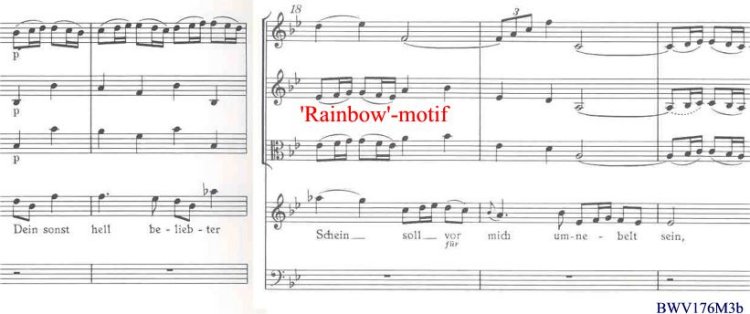
|
|
Although the short ascent/descent figures abound thoughout the mvt., Chafe wants you to see it in this context: "Niemand kann die Wunder tun" ("No one can do these miracles.") |
|
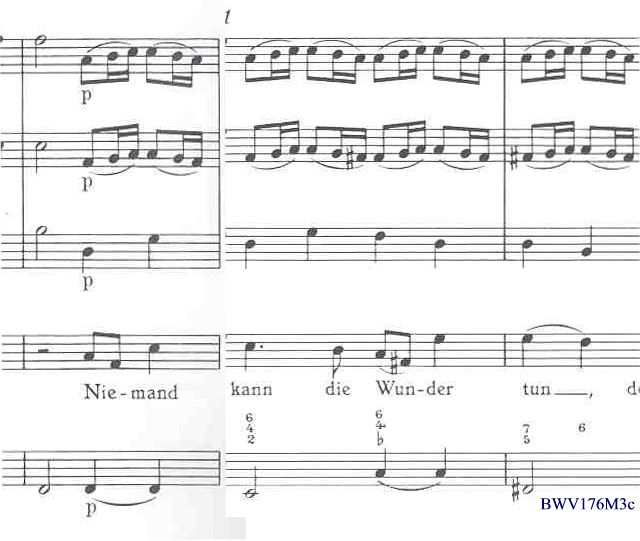
|
|
Where the words "Gottes Geist muß auf ihm ruhn" ("God's spirit must rest upon him [Christ]") appear in the aria, Bach has the soprano hold a single note for 6 measure to underscore the word, "ruhn" ("rest"). The soprano is 'resting' on this note. |
|
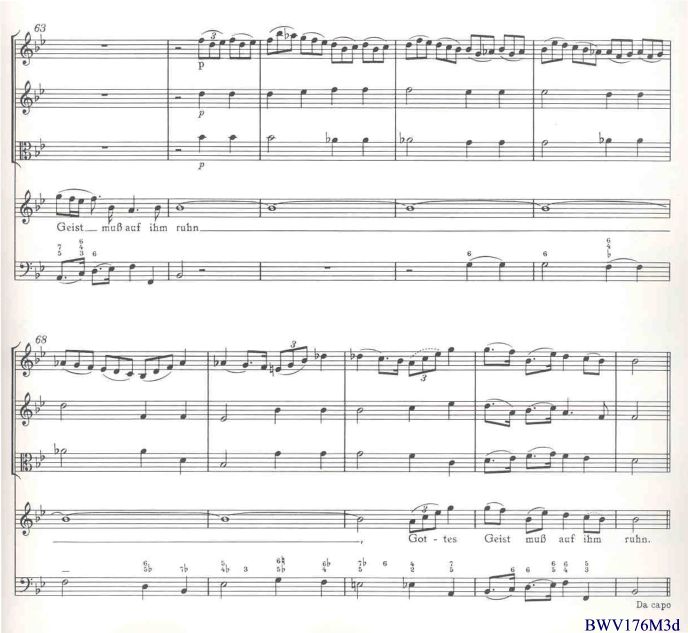
|
| |
|
Mvt. 4 Recitaive [Bass] |
|
In the arioso section of the bass recitative, Bach places emphasis on the word "Glaube" ("belief") by lengthening the note value as we have seen frequently in other cantatas. On the word, "verloren" ("lost") the voice seems to lose its way temporarily. |
|
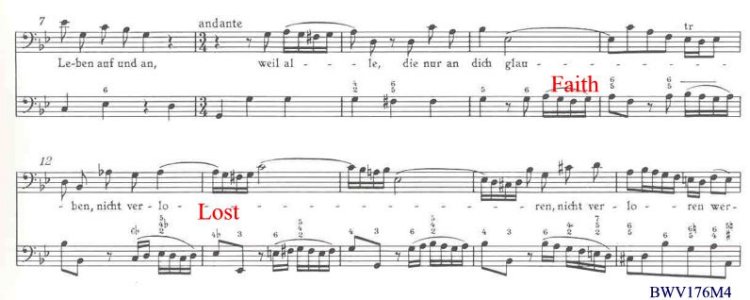
|
| |
|
Mvt. 5 Aria [Alto] |
|
Chafe points out the ascent/descent musical figures that seem to appear almost everywhere. Even the 'sigh'-motif from the 1st mvt. is present here. |
|
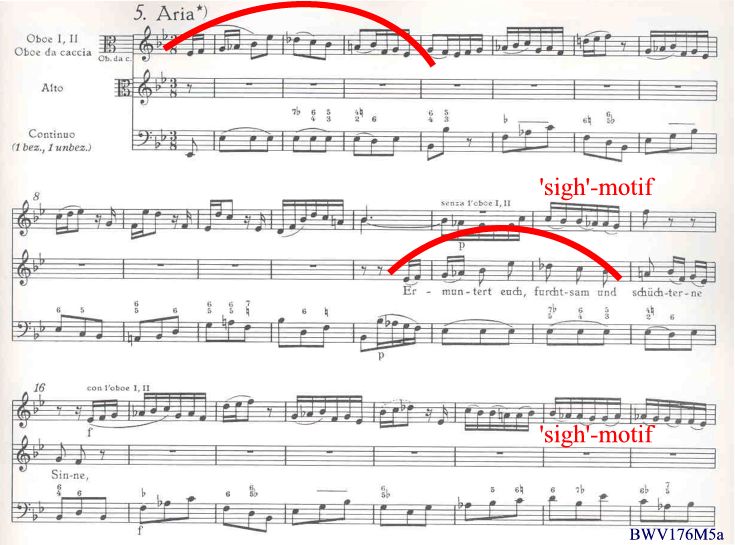
|
|
Here is more of the same with even the 'sigh'-motif included. |
|
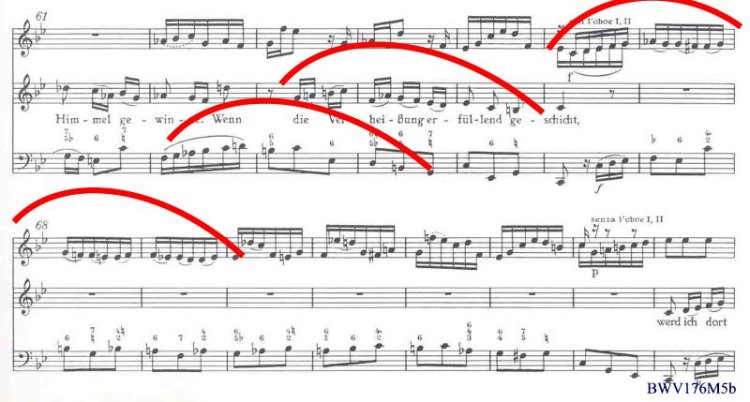
|
|
Visible here is an extremely long ascent that is followed by the descent on the words referring to the Trinity. |
|
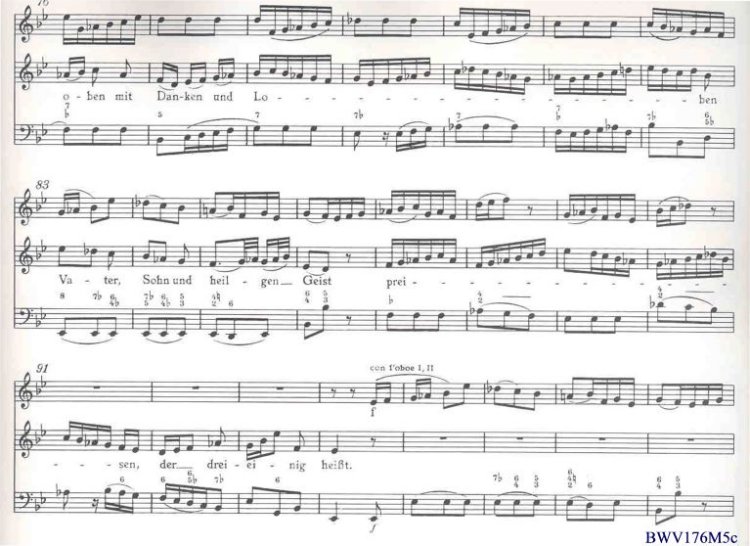
|
| |
|
Mvt. 6 Chorale |
|
This is truly remarkable! I found the 'sigh'-motif in the harmonization of the chorale. If you glance at the rest of the chorale (the beginning, missing line of the chorale does not show any of this either), you will find the Bach hardly ever places the tie marks for the numerous passing notes that characterize a Bach chorale harmonization. But here he specifically marked the alto part, so that the sighs become evident, or should become evident in performance. It is, as though Bach specifically did this very consciously to call attention to this spot. This provides the final element of unity for the entire cantata. |
|
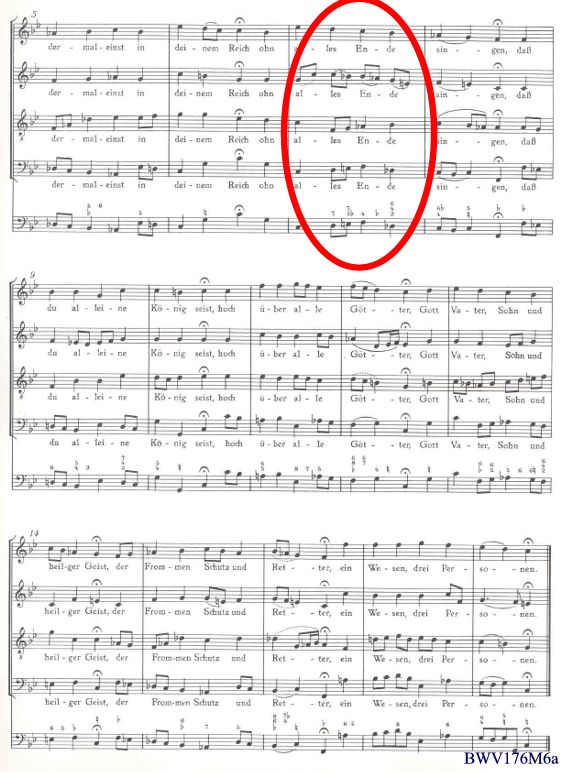
|
|
Here is a close-up of the encircled area. |
|
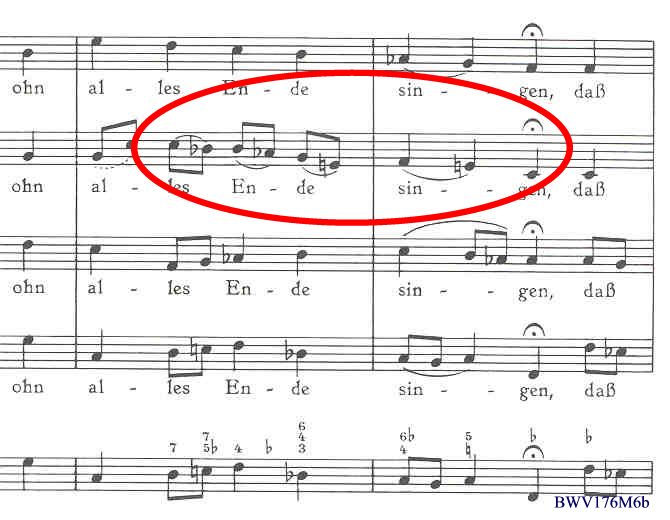
|
| |
|
All snippets from NBA I/15
Contributed by Thomas Braatz (June 13, 2001) |